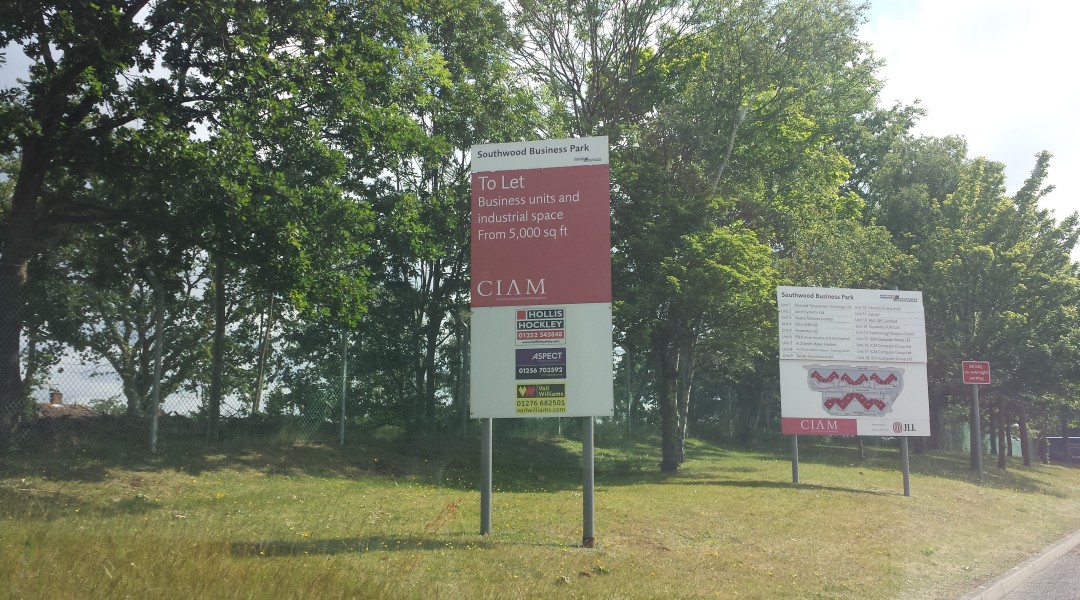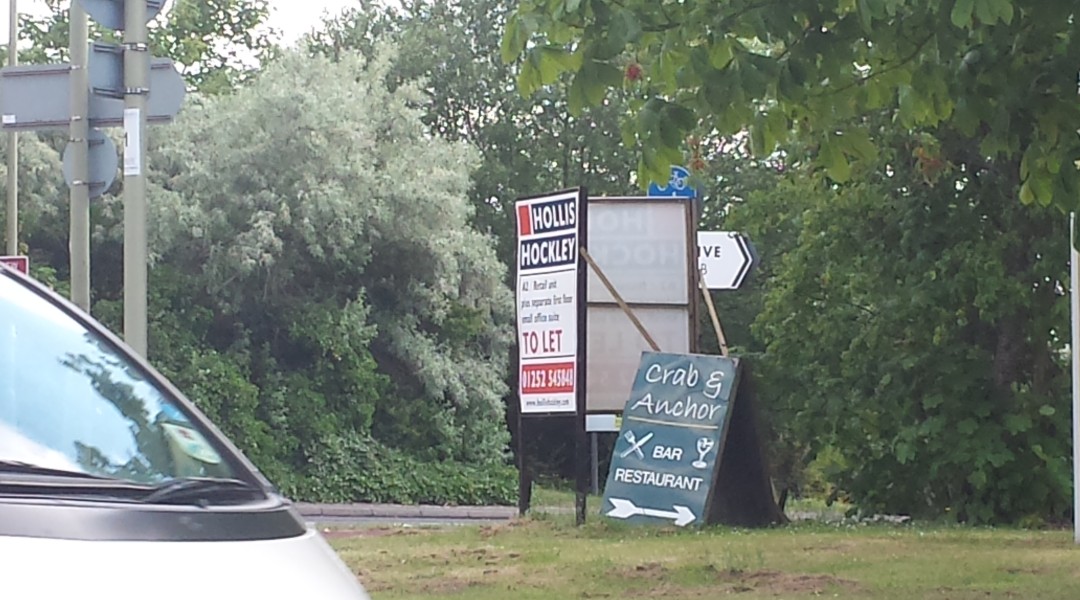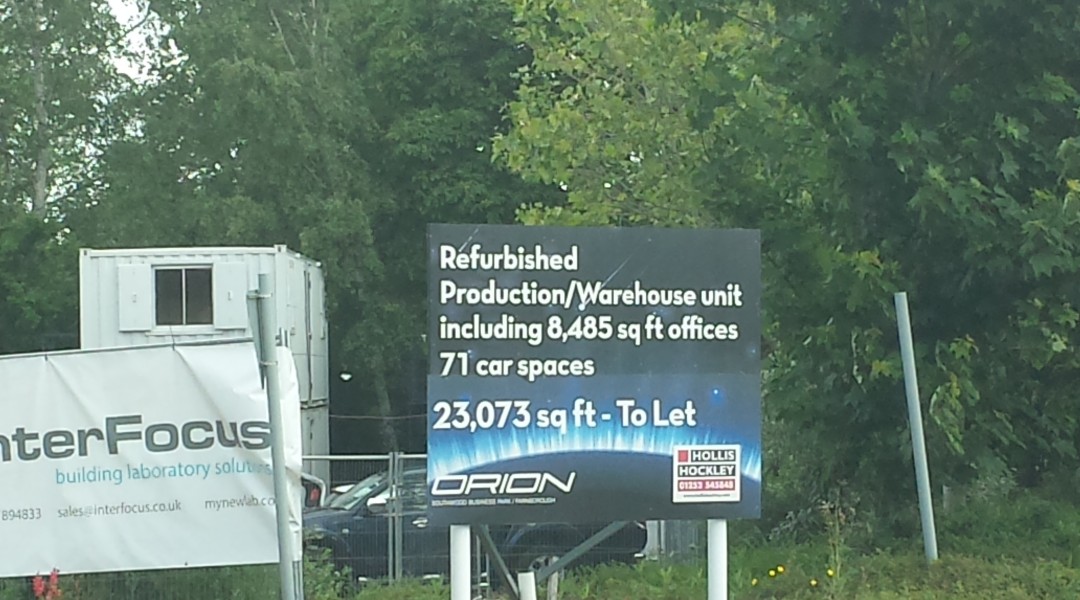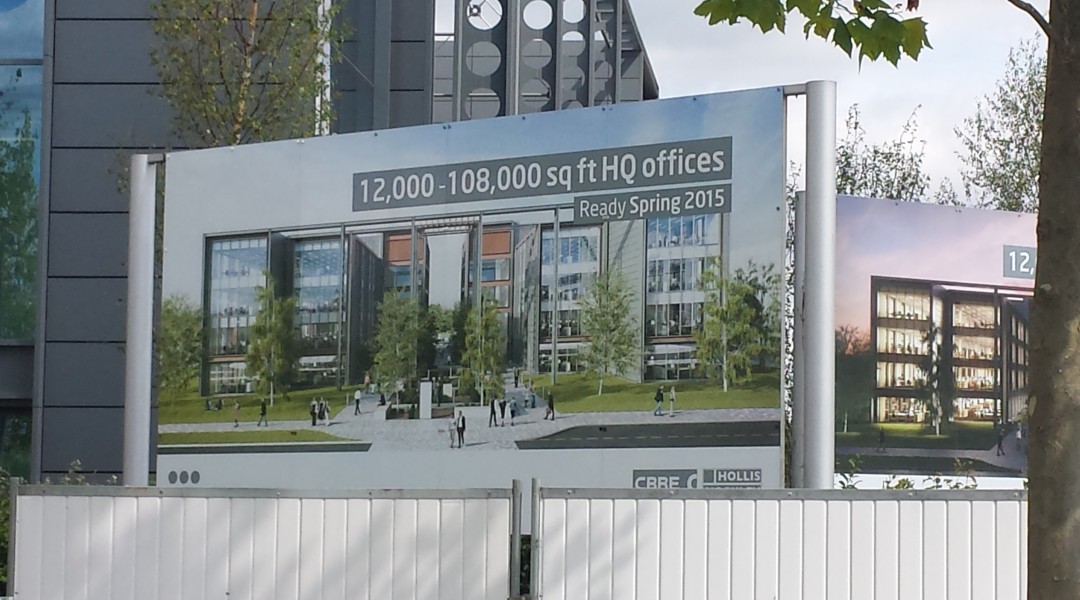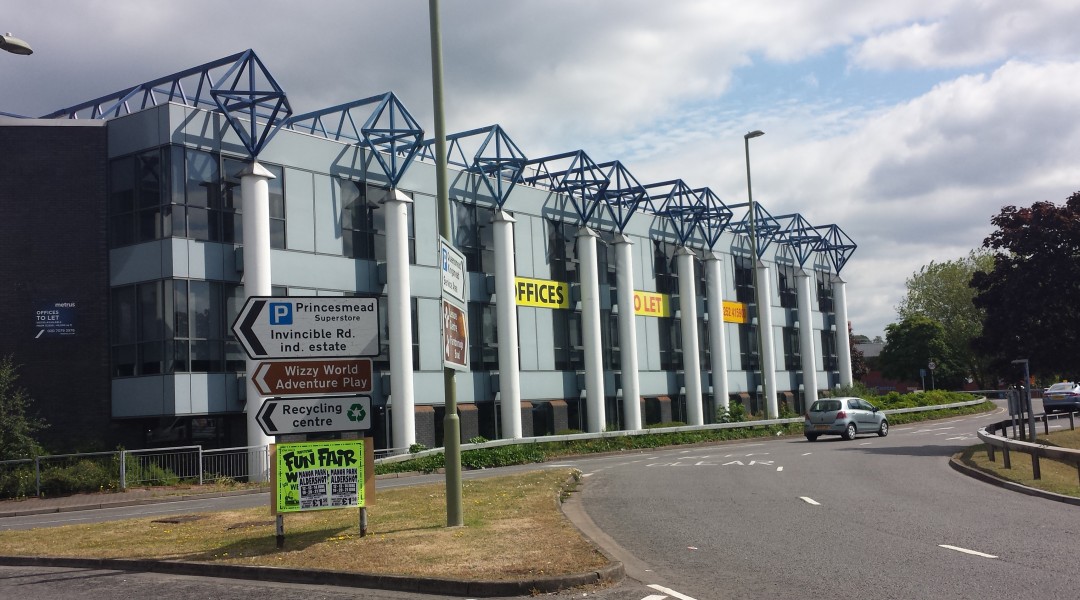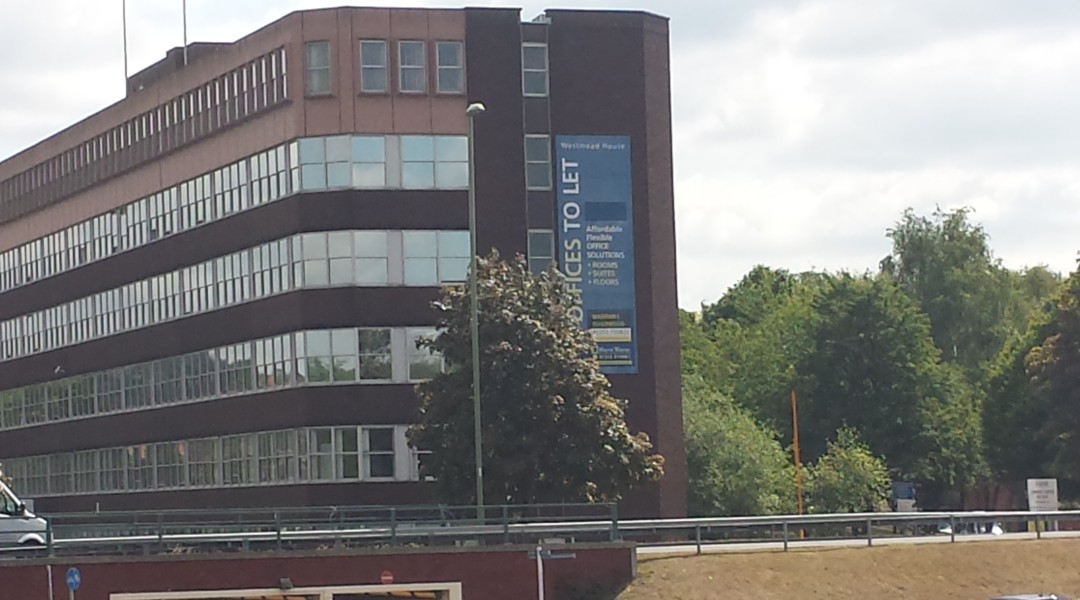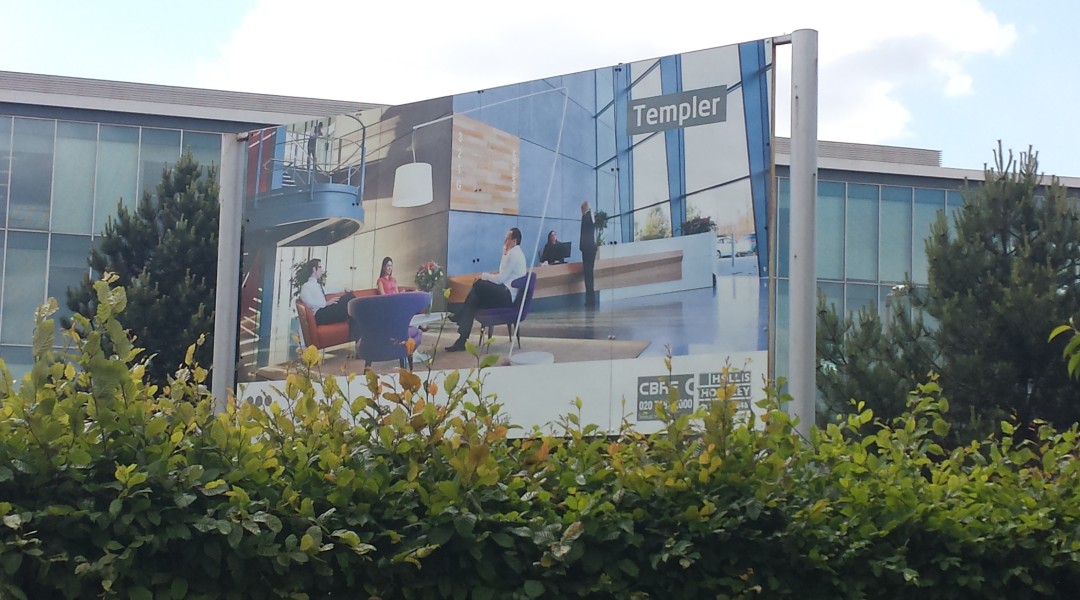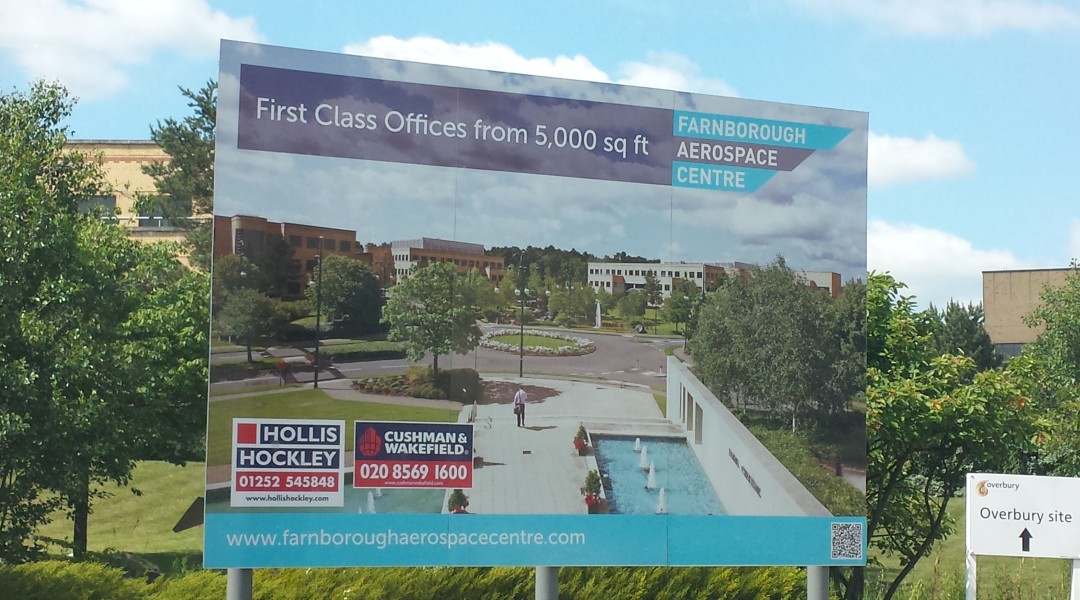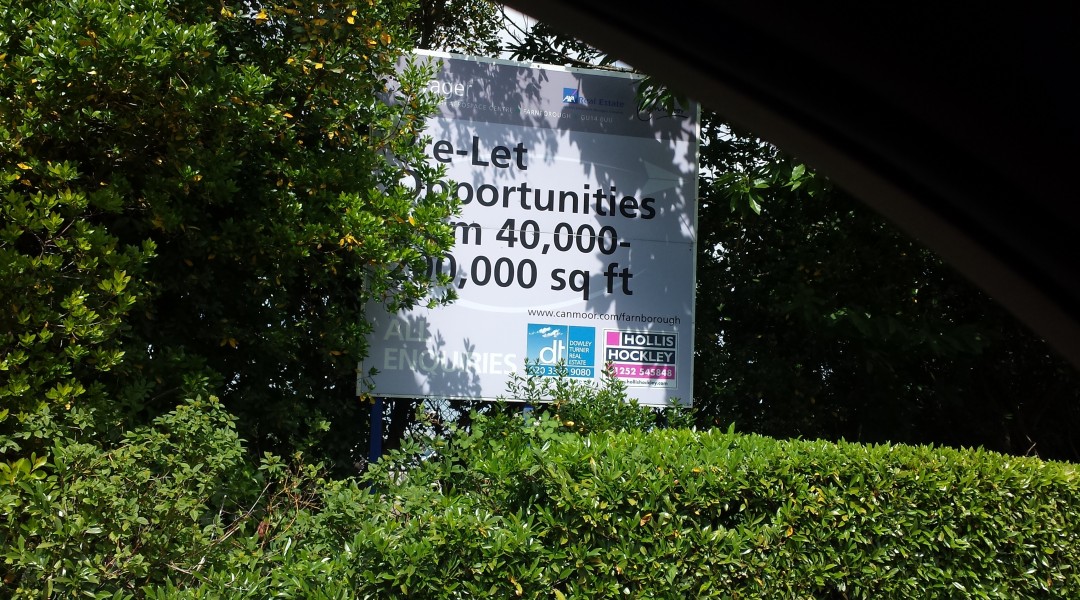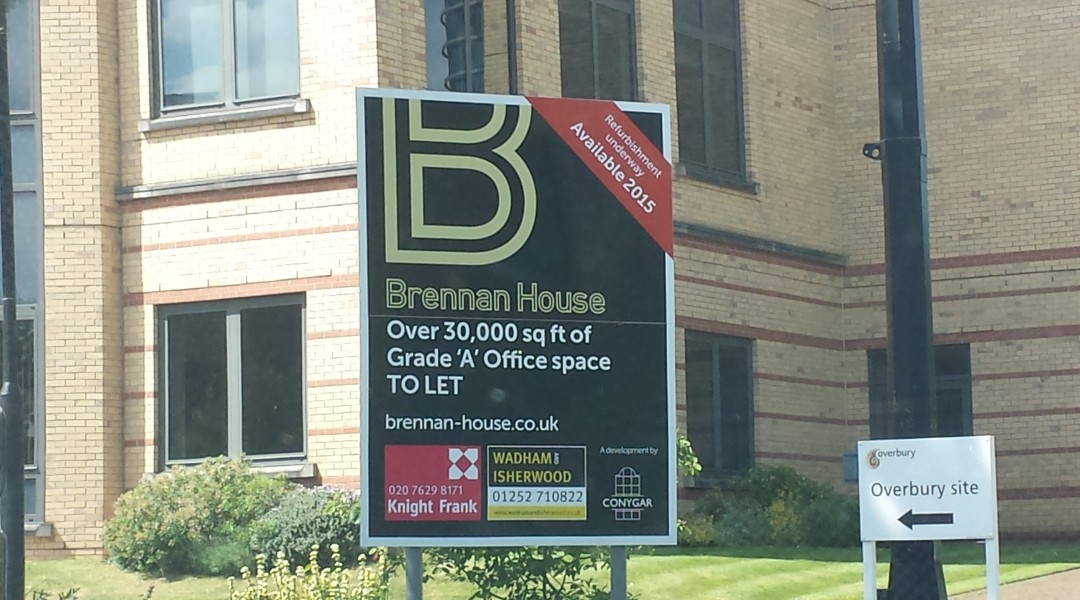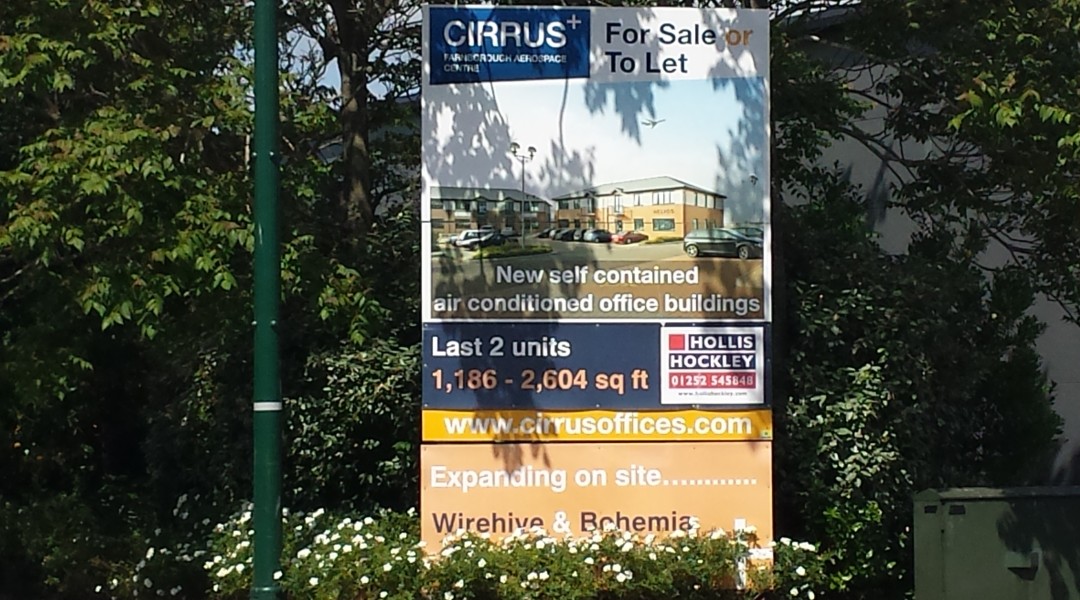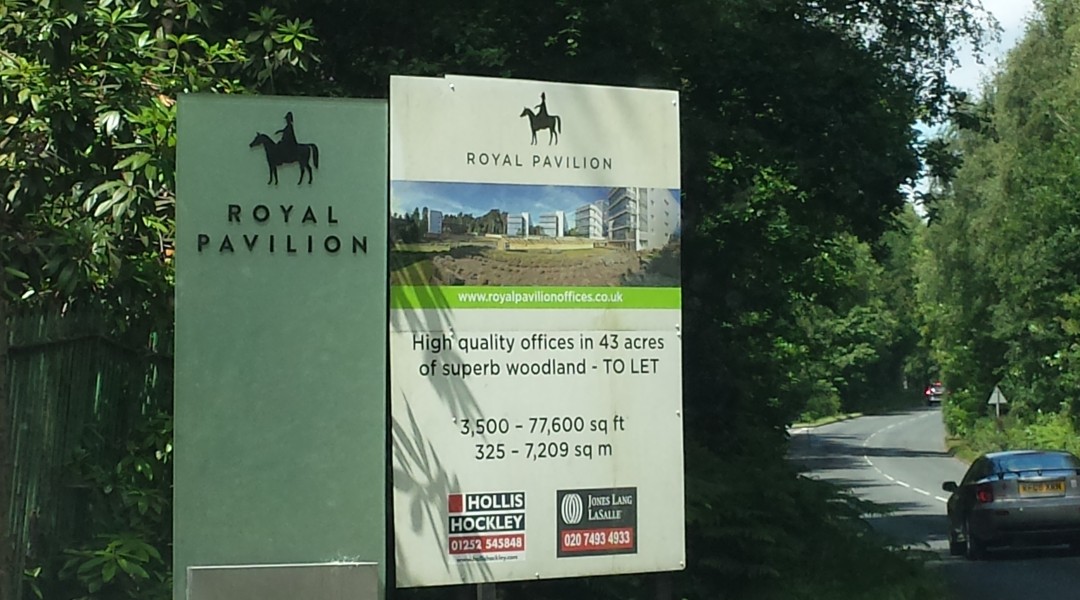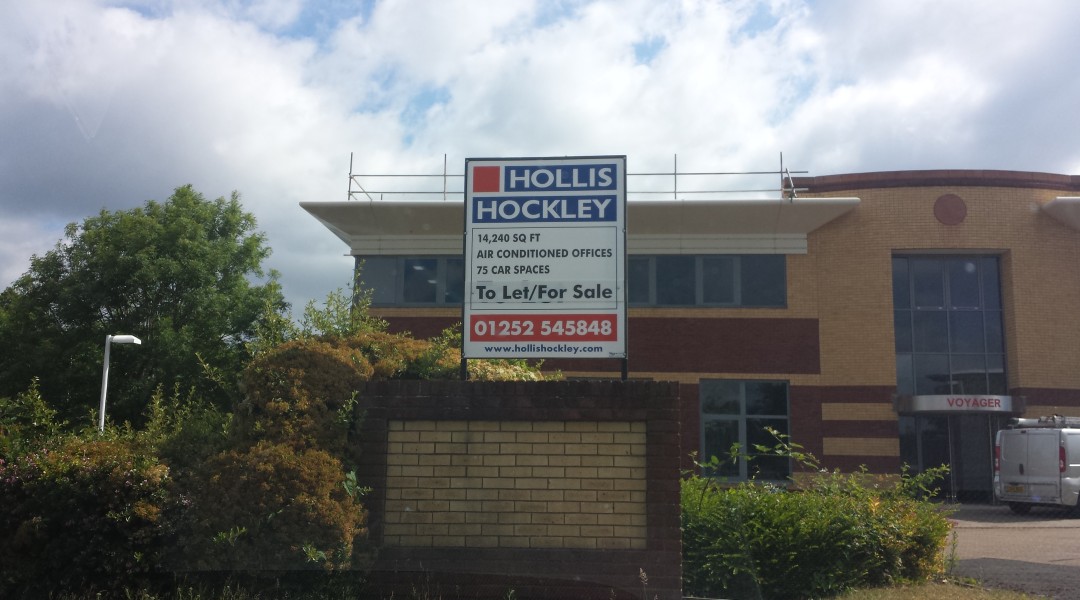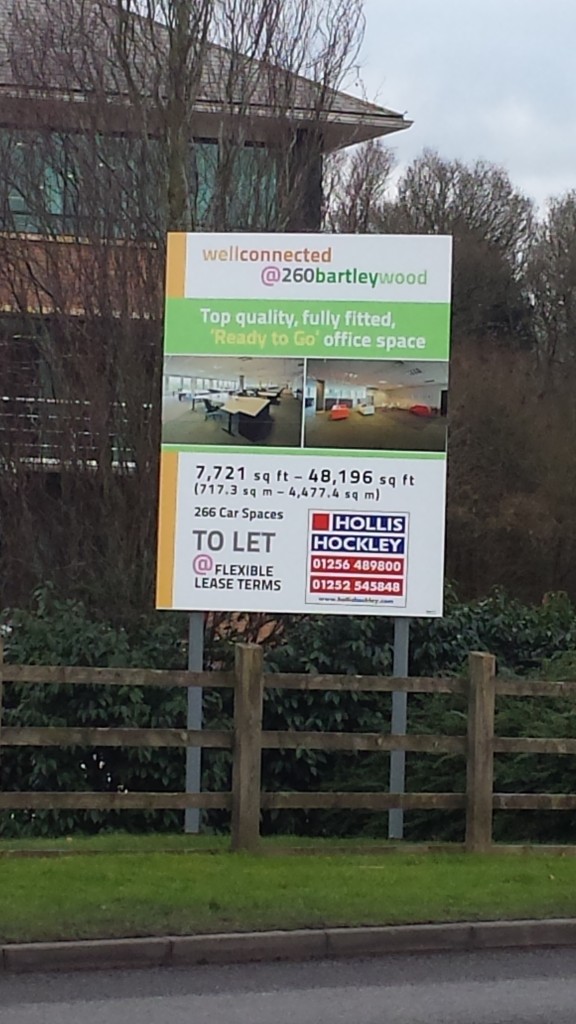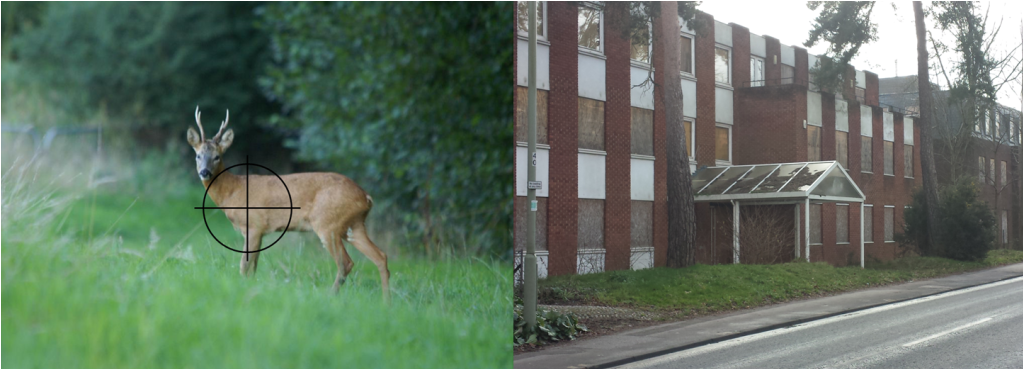
Which would you rather preserve – derelict eyesore or our countryside and wildlife?
Hook Action Against Over Development have written an article on their website which has been shared on Facebook, criticising both our support of a brownfield solution to our housing needs and the statement from the CPRE saying that the Winchfield New Town proposal was the worst site and the worst option for development.
We re-produce their article below, together with our responses in blue:
There has been a lot of talk about brownfield development and some claims that a new settlement is not necessary because brownfield housing development can provide for all of Hart’s housing needs. Brownfield housing development is the reuse of property or land for residential use where it was previously used for something else, for example office space, industrial land, military use or farm buildings.
Yes, we do believe that all of Hart’s remaining housing need can be met from brownfield sites, and we have set out the case and our plan here and here. This draws on sites in the SHLAA at only ~26 dwellings per hectare (dph) and the work of the Stonegate Report, plus we have added the civic area that Fleet Future recommended for redevelopment and Fleet Town Council have raised their council tax to fund the costs of preparing a redevelopment plan.
One group in particular from outside of Hook is putting forward the suggestion that the Hart consultation is a simple choice between brownfield and greenfield development. But no matter how much they repeat it does not make it any more true. The CPRE, an organisation with laudable aims, appears to have now fallen for this fiction and hijacking of the term “sustainable development”.
We believe they are referring to We Heart Hart. We believe the CPRE have not put forward an actual plan, but have clearly stated that they think that a new town at Winchfield is the worst site and worst option for development in Hart. Sustainable development was defined by the Sustainable Development Commission as:
“Sustainable development is development that meets the needs of the present, without compromising the ability of future generations to meet their own needs.”
The concept of sustainable development can be interpreted in many different ways, but at its core is an approach to development that looks to balance different, and often competing, needs against an awareness of the environmental, social and economic limitations we face as a society.
We believe that sustainable development does not include concreting over the equivalent of 25 football pitches per year of green fields and leaving untouched, vacant, decaying office blocks. A new settlement would compromise future generations by needlessly concreting over hundreds of hectares of green fields, depriving future generations of the health benefits of the countryside. The economics of the proposals don’t stack up, requiring ~£350m of infrastructure spending, money that neither Hart nor Hampshire County Council have, especially now that HCC is facing an £81m per annum funding deficit.
Hart’s housing strategy is brownfield first, but Hart cannot propose development on sites that are in commercial use or that have not been put forward for housing. If they were to do so then the Local Plan would fail inspection again at the first hurdle and this would be a disaster. Even hypothetically utilising these unavailable brownfield sites would demand construction at inner city density in order to meet Hart’s objectively assessed housing need. We cannot believe that CPRE are promoting building at such a density in Hart. That would not be sustainable.
We agree that sites need to be developable and eventually deliverable and nobody wants to see the Local Plan fail. Back in September, Hart Council said that they thought the brownfield capacity was 1,800 units. Miraculously, this has fallen by 75% to only 450 units in the consultation. However, as described above, most of the sites we have put forward are in the SHLAA and in no worse state of deliverability than those put forward for consultation. The other sites are in the Stonegate report and we understand Stonegate are working hard to secure these sites. The average density for the SHLAA sites is less than Hart’s planning rule of thumb at 26dph, and the Stonegate sites are at no higher density than developments that Hart has granted permission for such as the McCarthy & Stone’s recent development on Fleet Road which many people think is an attractive building.
Hart are actually consulting on which of Hart’s green fields should be selected for housing in the event that there is insufficient brownfield land to meet the housing need. Given the vast expansion of the existing towns and villages in Hart already, with Hook alone having a 25% expansion approved for this Local Plan period, the only suitable and truly sustainable option is a new settlement to allow for a planned increase in infrastructure. Just expanding existing towns and villages either piecemeal or with “urban extensions” is still building on green fields, but in a way that will not provide the opportunity to build extra schools, roads and health facilities that the thousands of new Hart residents will require. That would not be sustainable.
The proposed new town will in fact deliver over 1,800 houses in Hook Parish, which is more than the proposed urban extension and more than the undeveloped brownfield sites. To be clear, we do not support urban extensions either because we believe all of the remaining need can be met on brownfield sites. The infrastructure costs for a new town do not stack up and a new town will do nothing to close the large £12.2m existing infrastructure funding gap in Hook, and £20.7m gap in Fleet and Church Crookham. No evidence has been presented that we need a new secondary school and the funding for a new town will not address existing road bottlenecks, nor will there be sufficient funding to address the roads requirements of a new town. We repeat, we do not believe concreting over 25 football pitches each year is at all sustainable.
Elimination of all potential commercial property space in Hart is in fact extremely short-sighted. Even the Enterprise M3 Local Enterprise Partnership which is urging more housing would not want to see commercial space becoming rare and expensive. There is already an acknowledged shortage within Hart of small business units and light industrial space. Larger available office space provides options for small local businesses to grow without leaving the area. A thriving local economy needs a balance of housing and business to provide employment opportunities locally and avoid all of these new residents having to take to the roads and railways to commute out of the area for work on already busy transport links. That would not be sustainable.
Nobody is saying that all of the vacant commercial space be handed over to housing. But even the Employment Land Review, based as it is on the inflated Strategic Housing Market Assessment (SHMA) and the inflated jobs forecasts, suggests that there will be around 600,000 sq m of vacant employment space across the Housing Market Area at the end of the plan period and Rushmoor was planning to “protect” 96 Ha of vacant brownfield sites that simply are not needed. If there was such a shortage of offices or of light industrial space, places like the Murrell Green Estate would not have the big vacancies they currently have. Of course it would be more sustainable to free up some of these spaces and redevelop them for residential use rather than leave them to rot and decay.
There is very little brownfield land in Hart but there is an amusing “brownfield site slideshow”, made available by campaigners whose aim is to push development away from their village, to supposedly “demonstrate” how much brownfield land is available for housing. If you happen to see it, do bear in mind that:
- Several of the sites are already being developed for housing (and therefore counted in existing housing build numbers!) such as Landata House and Greenwell in Hook, Sun Park and others.
- Several of the sites are being converted to other commercial uses, e.g. Warehousing at Pyestock and retail development on Fleet Road where M&S are looking to move to an expanded new store.
- Several of the sites are in fact just one vacant floor(or even a partial floor) in an otherwise occupied office building!
Now perhaps the future really is an office building with some adjacent floorspace being residential, but can anyone imagine this being attractive to either residential or commercial tenants?!
The fact that some of the sites have already been taken up for redevelopment simply proves our case and shows it can be done. Our brownfield solution has taken account of the sites that are already underway. Work at Hartland Park (aka Pyestock) stopped years ago, and there is no sign of it re-starting. The owners will not wish to keep an expensive site forever generating no returns. Of course if M&S moves into another Fleet Road site, then they will leave behind a different vacant block to go with the many other vacant units in the Hart Centre.
There are plenty of examples of mixed residential and commercial use, both in this country and on the continent. Nobody is suggesting this should happen without comprehensive redevelopment.
This current consultation is clearly not about a choice between brownfield and greenfield development, it is about the best way to provide Hart’s required housing with essential supporting infrastructure and only a new settlement can achieve that. For more, please refer to our previous article hookdevaction.org.uk/hart-housing-consultation-restarted-your-action-needed.
The Hartley Winchook new town is not required, it not viable because of the flood risks and the massive, unfunded infrastructure costs, and will not be sustainable in any sense of the word. There is a brownfield alternative, and we should seize that opportunity.
Here are the slideshows of vacant brownfield sites we have found in Hart and Rushmoor:
If you would like to ask Hart to abandon the new town and urban extension ideas and create a brownfield solution to our housing needs, we urge you to respond to the Hart District Council consultation about the Local Plan and ask them to think again. We have created a dedicated consultation page, updated our two guides to responding to the consultation and they are available on the downloads below. The comments are designed to be cut and pasted into the boxes provided. It will be very powerful if you could edit the comments into your own words. Please do find time to respond to the consultation and play your part in saving our countryside.
Full version:
Responses to Local Plan Consultation
2 Minute version:
Respond to Local Plan Consultation in 2 minutes







































